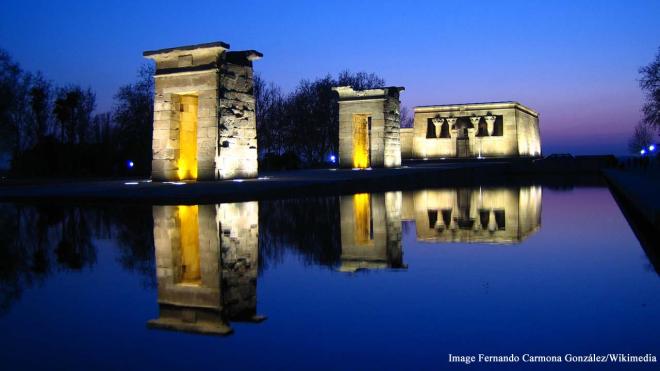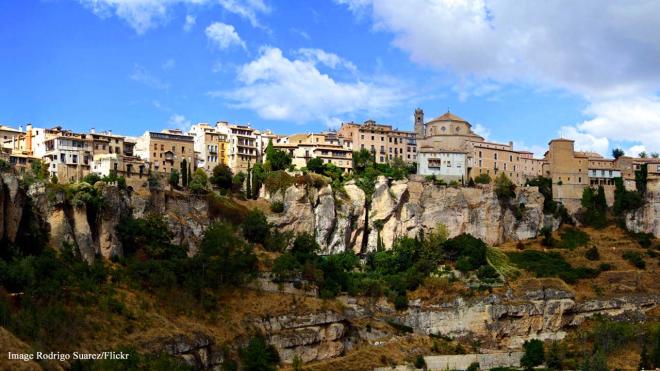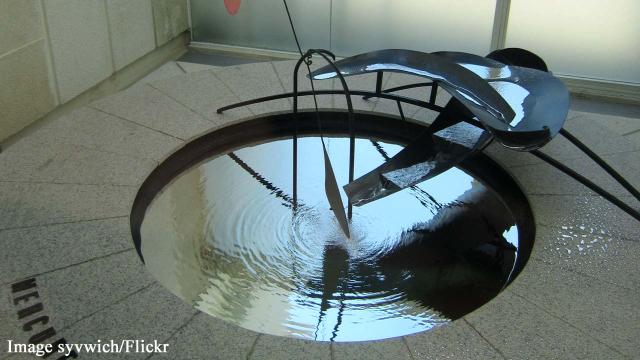These fascinating attractions show another side to Spain, a country with so much to offer visitors. While most people go to museums and art galleries, or hang out on the beach, these unusual attractions wait to be discovered.
Museo de la Tortura (Torture Museum) - 24 Calle de Alfonso XII, Toledo, Spain
Toledo in Castilla-La Mancha is a fortified city which was also a place of fierce persecution in the notorious Spanish Inquisition. The Museo de la Tortura displays horrifying artefacts used for torturing suspects during that dark period, including the extremely uncomfortable spiked interrogation chair pictured here.

Calder Mercury Fountain - Fundacio Joan Miro, Barcelona, Spain
Mercury is a toxic substance, but was mined for many years in Almaden, Spain for more than two millennia. Spain decided to dedicate a monument to the many mine workers who died from mercury poisoning. The beautiful, but deadly, fountain was built by sculptor Alexander Calder and instead of water, the fountain pumps only pure mercury. So beautiful to see, but deadly to touch.

La Fábrica (The Factory) - Av. de la Indústria, 14, Sant Just Desvern, Spain
Richard Bofill repurposed a cement factory into a place of business for his company, Taller de Arquitectura in Sant Just Desvern. A mixture of exposed concrete and plenty of green flora, the eight spacious silos became a lofty interior for the architect’s workshop. Bofill lives in the property and has offices and libraries and an exhibition room, known as “The Cathedral.” The grounds surrounding the structure with many trees. From the outside, people believe it is a ruin, but it is anything but.

Templo de Debod - Paseo Pintor Rosales 2, Madrid, Spain
This genuine Egyptian temple stands in the centre of Madrid and was gifted to Spain by Egypt in 1968 as thanks for Spain’s contributions towards saving historic sites in Egypt that would have been destroyed after the Aswan High Dam was completed. The temple stood in the Nile Valley from the 4th century BCE and is dedicated to the Egyptian gods Amun and Isis.

The Hanging Houses of Cuenca, Spain
The city of Cuenca in Castilla-la Mancha has many houses, built between the 15th and 18th centuries, that hang on the edge of a steep cliff. Originally many houses were seen throughout the city, seeming to cling perilously to the cliff’s edge. They were known as “hanging houses,” but the only houses of this type to exist in the city are the Las Casa Colgadas, where visitors can visit the Cuenca Spanish Museum of Abstract Arts and an onsite restaurant.

![The Temple de Debod - Egyptian temple in Madrid, Spain. [Image Tempel/Wikimedia] The Temple de Debod - Egyptian temple in Madrid, Spain. [Image Tempel/Wikimedia]](https://staticr1.blastingcdn.com/media/photogallery/2019/3/31/660x290/b_502x220x82/the-temple-de-debod-egyptian-temple-in-madrid-spain-image-tempelwikimedia_2238745.jpg)


